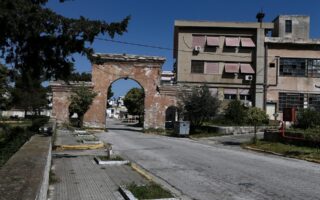Fresh attempt to redirect tourist growth
Land-use regulations would severely restrict short-term rentals in saturated areas

New land-use regulations to be approved by the Environment Ministry will attempt to limit tourism development in so-called “saturated” areas and spread it to less developed regions.
Short-term rentals will be severely restricted in “saturated” and “developed” areas, the top two of the five categories into which Greece is divided. In the former, all but one are situated on several islands, the use of a property for short-term rentals will be limited to 30 days during a calendar year, rising to 60 for “developed” areas, the latter of which include most of the coastal Athens area, Thessaloniki and the nearby Halkidiki Peninsula, among other regions.
In both areas, short-term rentals will not exceed a yet to be defined percentage of hotel beds per municipal unit.
This does not mean that there will be no new developments in saturated areas. There will be incentives to upgrade – only 4- and 5-star accommodation will be allowed – create mixed accommodations (hotels and residences) and take down any unused properties, of which there are quite a few, especially in places such as Mykonos.
The plan also calls for resorts on uninhabited islands, although size will be limited and limitations, such as no building close to sea borders, mean that this will mainly concern islands (not islets smaller than 30 hectares) close to the mainland.
New tourism developments will also have to be built at some distance, a minimum of 150 meters, from the shoreline; the current minimum is 30 meters for residences and 50 meters for hotels. Of special concern, and need for protection, will be areas vulnerable to the rise in sea levels due to climate change.
As part of the emphasis on large tourist installations, incentives will be given to convert disused industrial buildings to accommodations, especially in the capital Athens and Greece’s second-largest city, Thessaloniki.
Land-use plans have not had a happy conclusion recently. Six environmental NGOs went to court against the first such plan, in 2009. Before the courts could decide, the government published another plan in 2013, which was invalidated in court in 2015. The 2009 plan was finally rejected in court in 2017. This experience would explain the government’s delay in officially publishing the newest plan, or the one specifically concerning the South Aegean region, even though it’s been ready for two years now.





